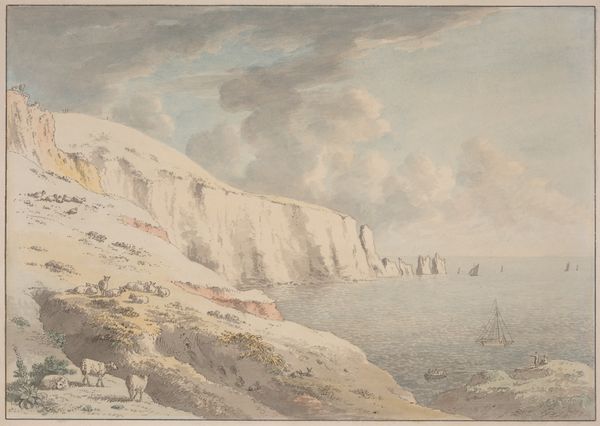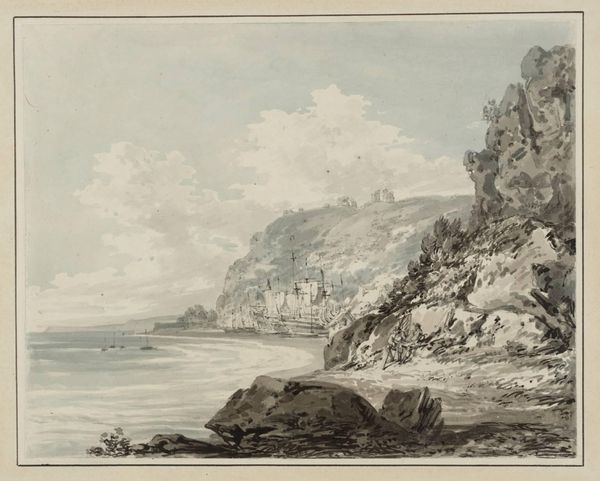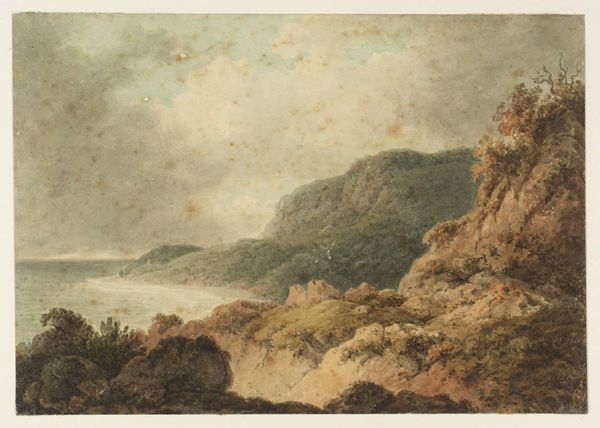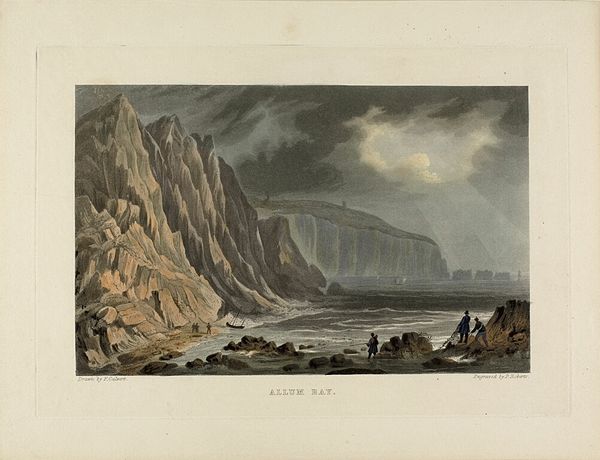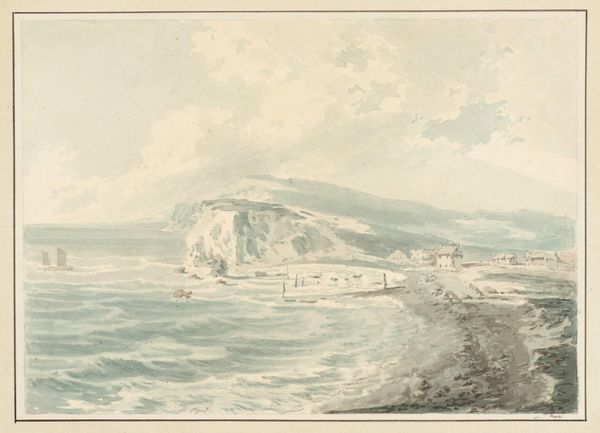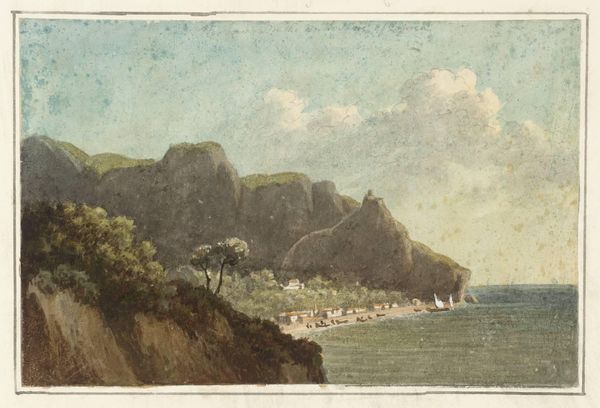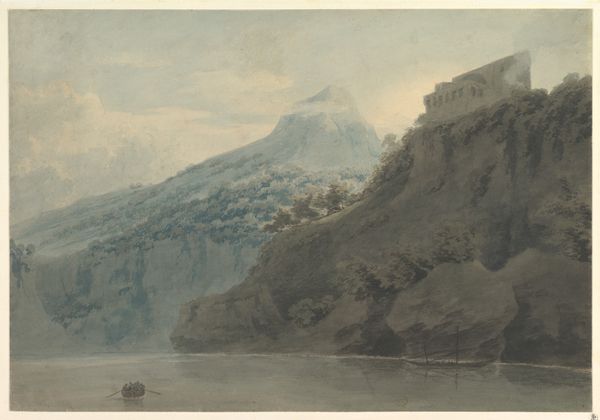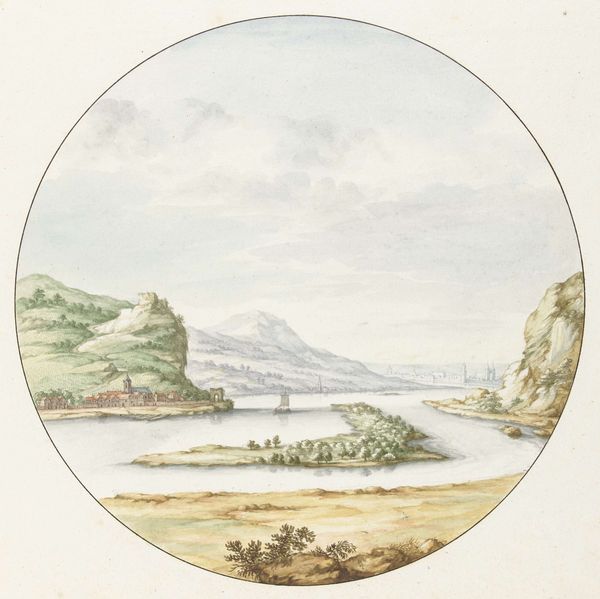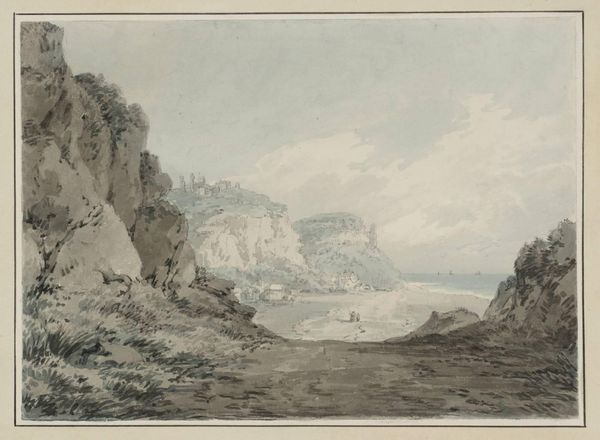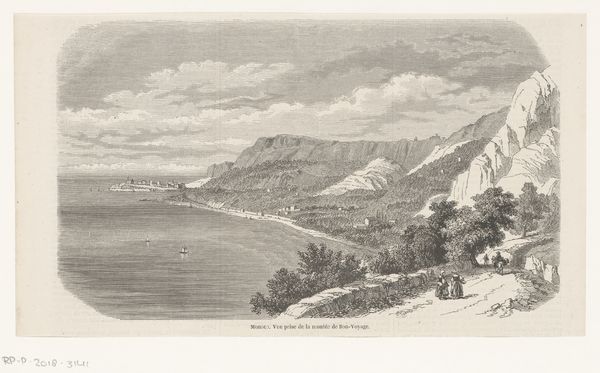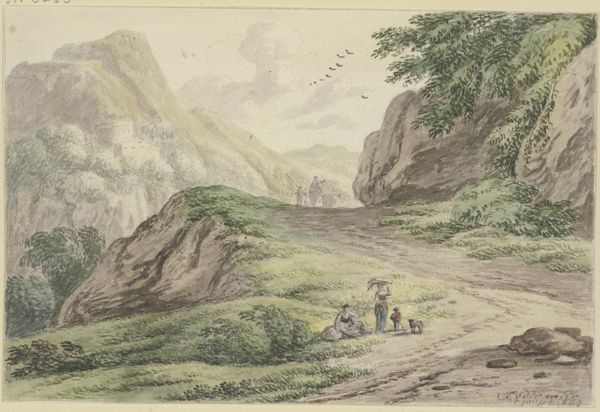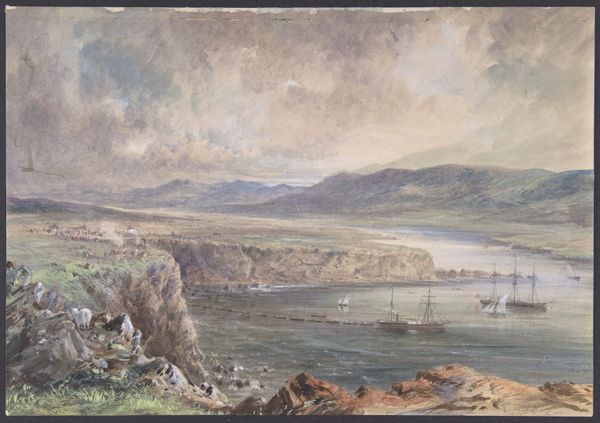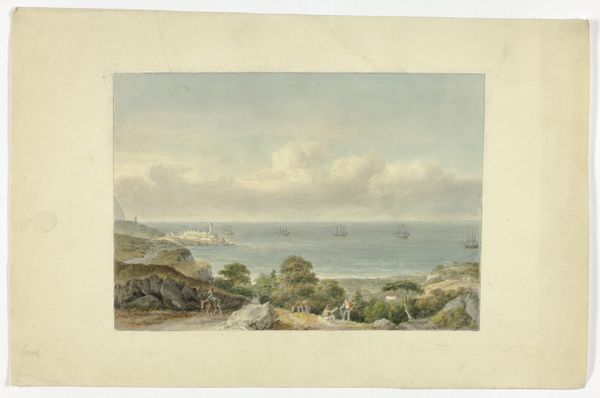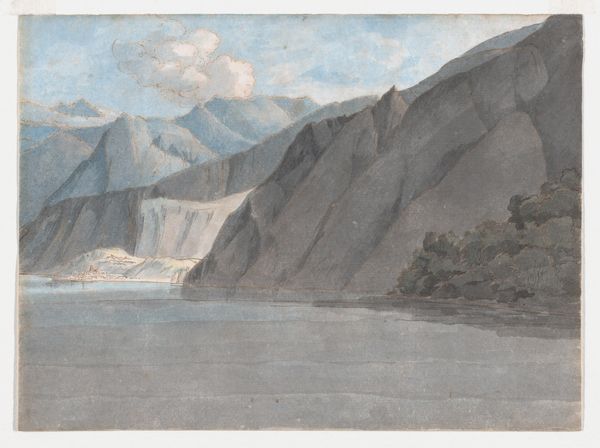
drawing, watercolor
#
drawing
#
landscape
#
watercolor
#
romanticism
#
watercolour illustration
#
mixed medium
#
watercolor
Dimensions: Overall: 14.9 x 24.2 cm (5 7/8 x 9 1/2 in.) mat: 27.9 x 35.6 cm (11 x 14 in.)
Copyright: National Gallery of Art: CC0 1.0
Curator: Thomas Rowlandson’s watercolor and pen drawing, dating back to around 1811, offers us a serene “View from the Inn at Lynton”. Editor: My initial impression is one of tranquility. The subdued palette creates a peaceful scene, yet there's an underlying tension, a looming presence of nature that hints at something more powerful. Curator: Absolutely. Rowlandson was working in a period where the picturesque and sublime were dominating landscape art. What strikes me is how Rowlandson translates this popular aesthetic to represent evolving socio-political dynamics. Inns weren’t just places to rest; they were public arenas where classes mingled. Do you see class signifiers in the painting? Editor: That’s interesting, and it does shift my perspective. Looking closer, the inn itself, nestled rather inconspicuously, is almost overwhelmed by the immensity of the landscape. The solitary sailing boat in the water, does it suggest commerce or escapism for the leisure classes? Also, note the distinct path wrapping round and up the hills: I'm keen to interrogate this in respect to land use, accessibility, and perhaps ownership. Is Rowlandson implicating the burgeoning infrastructure, or some of his wealthy patrons, with such prominence? Curator: The road is a telling detail! Such structures literally changed the landscape, but also controlled who had access to nature's resources. It becomes a charged space in Rowlandson’s composition. Furthermore, he's engaging with this era of war and industrial shift that radically altered people’s relations. The way he depicts the English landscape makes us wonder whom and what is deemed worthy to exist within it. Editor: Your point about access makes me see the piece differently now. What I initially took as a neutral depiction of the countryside seems fraught with those political and social stratifications you rightly point out. It shows how profoundly cultural contexts affect what we perceive. The artwork's subtle engagement and incorporation of power dynamics helps it endure in this respect, which I believe is just as important as the formal elements of artistic representation. Curator: I agree. There’s such nuance that at first we barely recognise how Rowlandson used visual cues to raise concerns over land, social class, and emerging capital at the time. Perhaps in engaging in these artworks, we can understand these issues which have not ceased but simply adapted and continue to be of pertinence to modern times.
Comments
No comments
Be the first to comment and join the conversation on the ultimate creative platform.
